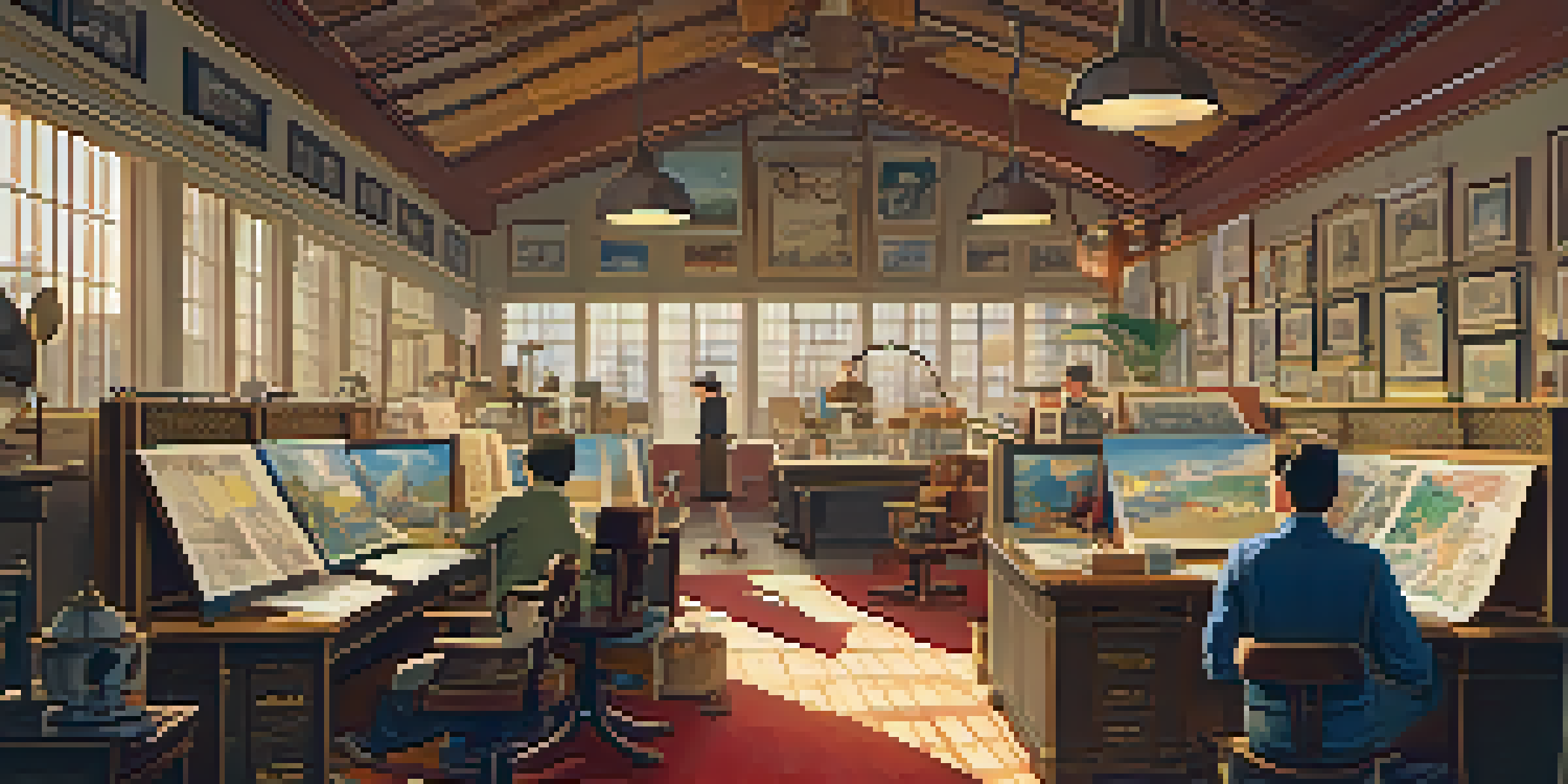The Golden Age of Animation: Walt Disney and Beyond

Introduction to the Golden Age of Animation
The Golden Age of Animation, spanning from the 1920s to the 1960s, marked a pivotal time in entertainment history. This era was characterized by innovative techniques that brought animated characters to life, captivating audiences around the world. Walt Disney, a key figure in this movement, revolutionized the industry with his creativity and vision. As we delve into this enchanting period, we will uncover how Disney laid the foundation for the animated films we cherish today.
Walt Disney: The Pioneer of Animation
Walt Disney was more than just a name; he was a visionary who transformed the landscape of animation. Starting with short films like 'Steamboat Willie,' he introduced synchronized sound to animation, which was groundbreaking at the time. His relentless pursuit of quality led to the creation of iconic characters, such as Mickey Mouse, who became cultural icons. Disney's influence extended beyond characters; he was also instrumental in developing full-length animated features, sparking a new genre in cinema.
Walt Disney Revolutionized Animation
Disney introduced synchronized sound and iconic characters, transforming animation into a cherished art form.
The Birth of Feature-Length Animation
In 1937, Disney released 'Snow White and the Seven Dwarfs,' the first-ever full-length animated film, which changed everything. This ambitious project not only showcased the potential of animation but also proved that it could be a serious art form. The success of 'Snow White' paved the way for future classics like 'Cinderella' and 'Bambi,' which enchanted audiences and set box office records. This era taught us that animation could evoke deep emotions, making it a beloved storytelling medium.
Innovations in Animation Techniques
The Golden Age was also a time of extraordinary innovation in animation techniques. Disney's use of the multiplane camera added depth and dimension to animated scenes, making the visuals more immersive. Techniques like rotoscoping, where animators traced over live-action footage, allowed for more realistic movements. These advancements not only enhanced storytelling but also inspired other studios to experiment with their animation styles, leading to a vibrant and diverse industry.
Feature-Length Films Changed Everything
The release of 'Snow White and the Seven Dwarfs' established animation as a serious storytelling medium.
Iconic Characters and Their Impact
The characters created during this era are not just animated figures; they are cultural icons that have left a lasting impact. From the mischievous antics of Donald Duck to the adventurous spirit of Peter Pan, these characters resonated with audiences of all ages. They represented values such as friendship, bravery, and love, making them relatable and timeless. Walt Disney's philosophy of creating characters with depth and personality set the standard for all future animated films.
The Role of Music in Animation
Music played a crucial role in the success of animated films during the Golden Age. Disney understood that a memorable score could elevate a film, enhancing the emotional experience for viewers. Songs like 'When You Wish Upon a Star' from 'Pinocchio' became timeless classics, echoing the dreams and aspirations of audiences. The integration of catchy tunes with animation not only entertained but also created a lasting bond between the characters and the audience.
Innovative Techniques Shaped the Era
Advancements like the multiplane camera and rotoscoping enhanced the visual depth and realism of animated films.
The Legacy of the Golden Age
The Golden Age of Animation laid the groundwork for the future of animated storytelling. The techniques, characters, and narratives developed during this time continue to influence modern animation. Studios like Pixar and DreamWorks draw inspiration from Disney's pioneering work, pushing the boundaries of creativity. Today, the legacy of this era is evident in the continued popularity of animated films, showing that the magic of animation endures.
Conclusion: A Lasting Influence
In conclusion, the Golden Age of Animation, spearheaded by Walt Disney and his contemporaries, marks a transformative chapter in entertainment history. This era not only introduced groundbreaking techniques and beloved characters but also established animation as a significant art form. As we reflect on the impact of this golden era, we are reminded of how these animated tales have shaped generations and continue to inspire new storytellers. The spirit of creativity and imagination from this time lives on, inviting us to dream and believe in the power of animation.